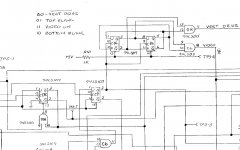Hutch
Experienced Member
Seems to be losing vertical deflection. Been getting steadily worse over time and seems better when it's cold vs when it's warmed up.
Was thinking about re-capping but I know there are some caps that require very low ESR and may be hard to find.
Not sure what I should be looking for at Mouser or DigiKey to be sure I get the right specs.
Do you see anything in the video that points to a particular component or area?
Thanks.
Video Link: https://youtu.be/gECCG7t_qdU
Was thinking about re-capping but I know there are some caps that require very low ESR and may be hard to find.
Not sure what I should be looking for at Mouser or DigiKey to be sure I get the right specs.
Do you see anything in the video that points to a particular component or area?
Thanks.
Video Link: https://youtu.be/gECCG7t_qdU


